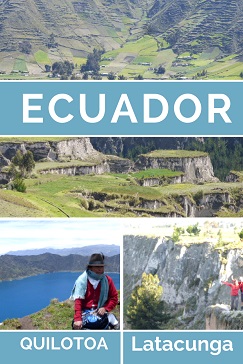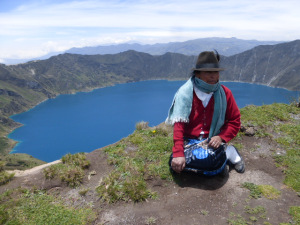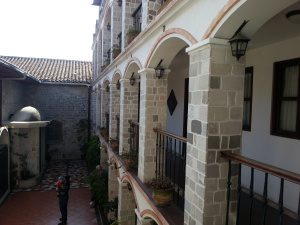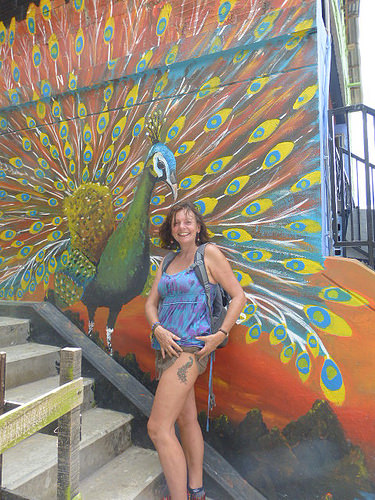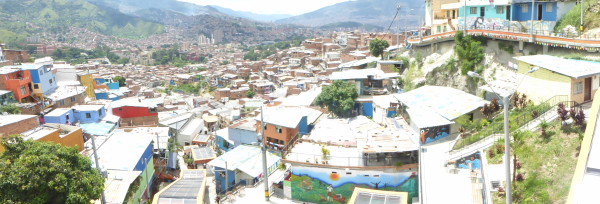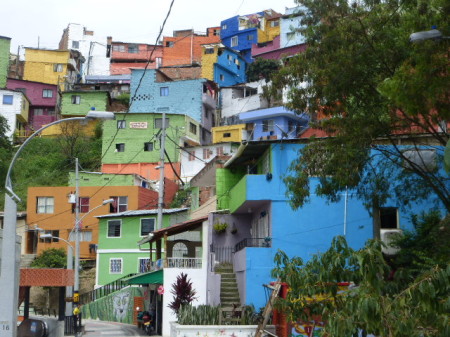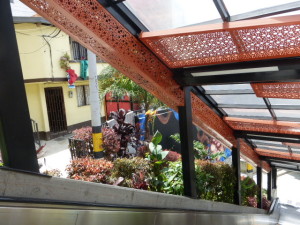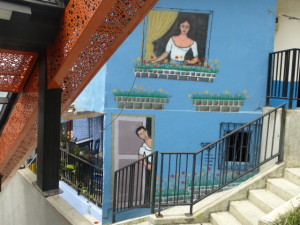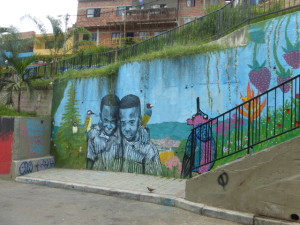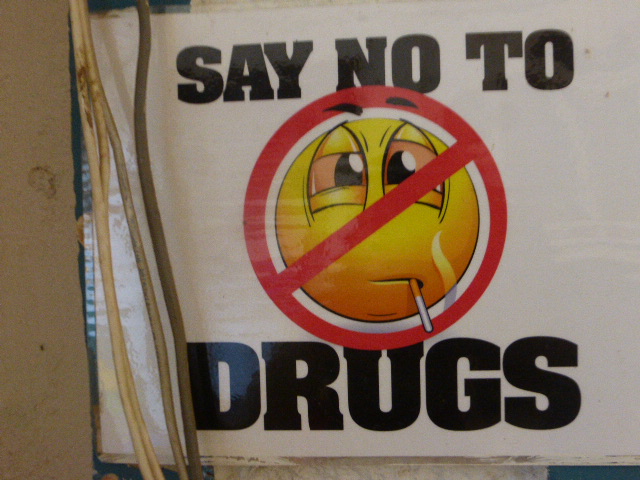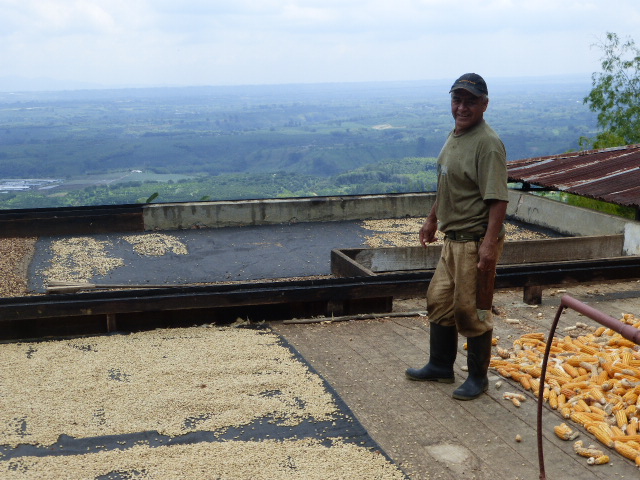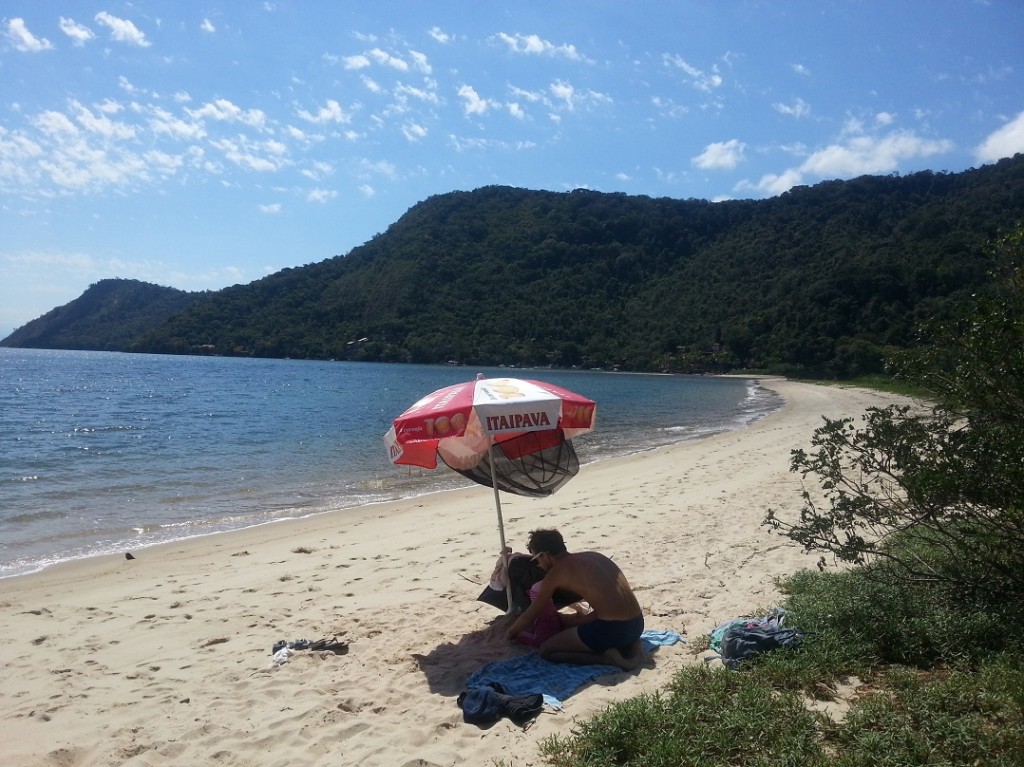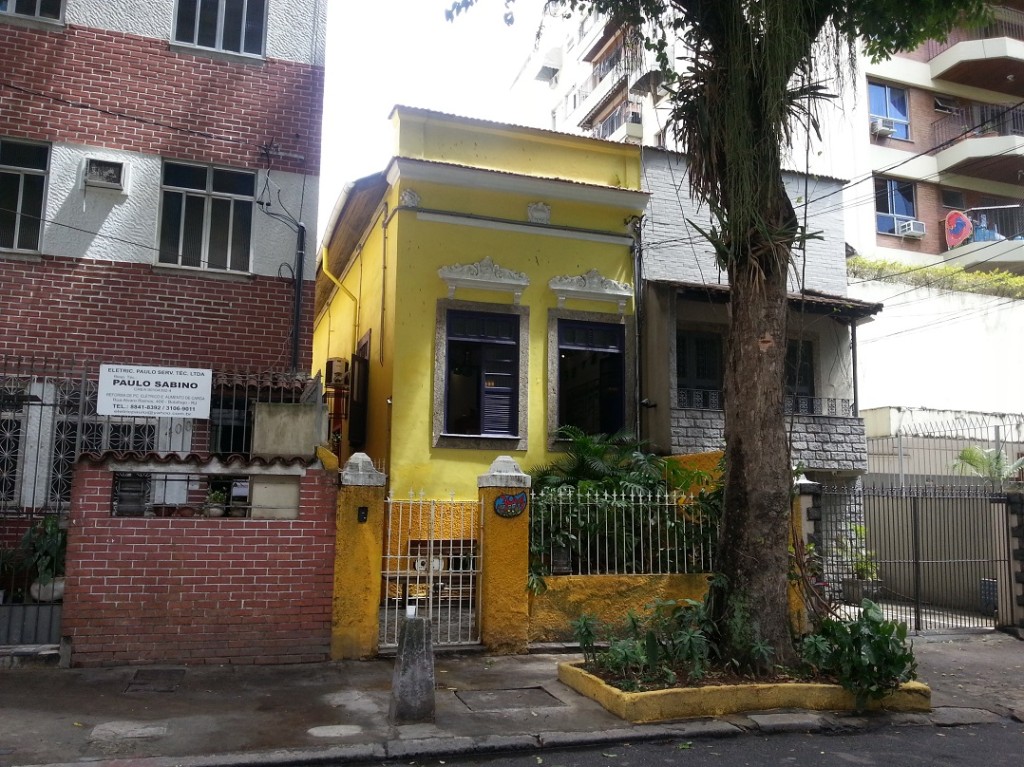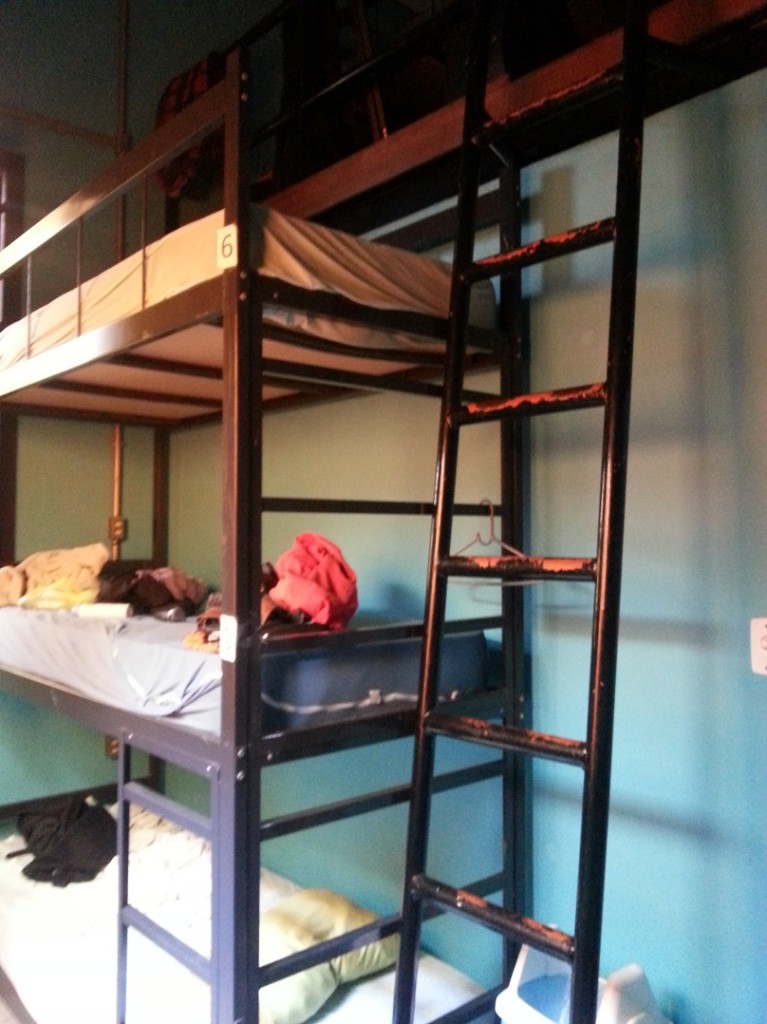
by Jane | Sep 17, 2018 | South America |
This article was first published February 2015 and has been updated.
The ‘Day of the Dead’ and Climbing a Volcano in Quito, Ecuador
Arriving in Quito, Ecuador on ‘The Day of the Dead’ my friend Marcel and I managed to wangle our way into the crypt which is underneath the Basilica.
Normally only open on this one day each year to the relatives of the dead whose remains are interred in little holes in the walls, we tried to look like locals as we sidled past the guards on the door.
Scarlet Jones Travels is a participant in the Amazon Services LLC Associates Program, an affiliate advertising program designed to provide a means for sites to earn advertising fees by advertising and linking to Amazon.com

the crypt underneath the Basilica, Quito, Ecuador
We respectfully spent half an hour or so wandering around the tunnels where families were dusting out the cobwebs in the little alcoves and replacing the plastic flowers, photos and statues of this saint or that virgin and generally just giving everything a bit of a spring-clean.
It was very different to the bright, colourful ceremony that we had passed in our bus earlier that day up in the mountains, although I do like the tradition of everybody remembering their loved ones on the same day.
Rather than individuals dealing with their personal loss on various anniversaries of birth, death or Christmas whilst the rest of life goes on around them, the Day of the Dead allows a collective understanding and empathy with others.
As our bus had driven out of the mountain town of Otavalo earlier that morning we had got caught up in a traffic jam outside the main cemetery where the majority of the indigenous population bury their dead.
The roads around the cemetery had been packed solid with people and families laden down with baskets and flowers as whole families decamped to the graves of their ancestors where they held picnics. The picnics which always included the dead person’s favourite food were actually spread out on top of the graves and everybody sat cross legged around.
The ‘Day of the Dead’ which is celebrated all around Central and South America and Mexico is a day of celebration rather than sadness and it was never going to be any more colourful than in that rural cemetery.
To further cement the collective remembrance, at this time of the year many of the shops and restaurants sell little images of people called guagua de pan (bread babies) and a thick, gloopy purple, slightly unsettlingly warm drink called colada morada (the drink is made of corn and blackberries). Both of these seasonal treats are devoured with relish everywhere.

guagua de pan; treats for the Day of the Dead in Ecuador
Reflecting on the previous five years.
As I update this article nearly five years after I had first published it, I reflect upon how my life has turned out.
Arriving in Quito after 3 months in a volunteer placement in Peru I was a totally confused solo traveller. My personal life was in tatters and my self-belief was at rock bottom. I often pose myself the question….’what will my life look like in 5 years time’…and I vividly remember doing just that when I was in Ecuador.
I never take things for granted and I know that I got to the place in my head where I am right now with a lot of determination, constant questioning and with the support of some truly amazing friends. South America is edgy, dangerous, overwhelming and bursting with life and it was certainly a baptism of fire for me, then recently divorced and with almost zero self-confidence.
I am now a Mindfulness Practitioner and a published (ebook) author, (click here for my book, Becoming Stronger through Mindfulness), I support and guide others along their paths of self-discovery and I continue to travel.
At the end of this article I will post some useful links to resources that you might like if you are about to head off on your own journey – and if you are not quite ready to do that yet and you would like some guidance about how to learn to believe in yourself again, drop me an email. I would love to hear from you.
Things began falling into place for me in South America and one day in Quito when I was out for lunch I met a lady from Canada who was visiting the city. It now always makes me smile when this happens because one of my main worries before I set off on my adventures, and that of most solo travellers is of how you will meet people when you’re on your own; but back then, I didn’t realise how frequently this would happen.
I was extremely grateful when this lovely lady simply came over and asked to join me at my table. The following day Sudha and I agreed to meet so that we could ride the cable car together – and there I was, no longer a frightened solo traveller
In the end we didn’t take the cable car as there was incredibly low cloud over the entire city but we went off for a morning’s shopping in a large craft market and drank some more of the purple colada morada. Quito stretches the length of a long narrow valley and in just about every direction there are mountain peaks, volcanoes and clouds.
There is something so special about the clouds above the Andes. I don’t know how the sky can appear to be bigger and more expansive but here it does, and because in the mountains you are high up, the clouds sit lower over you.
They can certainly affect the mood of the city trapping the air in when they press down grey and menacing, or stealthily creeping and flowing down the surrounding mountains like soft grey rivers of fog or, when there are no clouds at all, it’s as if your spirit is free to soar and fly up and away into the universe beyond and here I was enjoying it with a lady that I had only recently met and looking forward to my next destination.

Quito far below the Pichincha volcano in Quito
Climbing the Pichincha volcano, Quito
However, I’m getting all poetical and I digress yet I still have to tell you about my last amazing day in Ecuador. Marcel and I decided to climb a volcano. We were joined by Rachael who was new in town and staying in the same hostel as us and luckily for us the clouds were way up high on the day that we set off for the cable car called the TeleferiCo.
Quito, the capital city of Ecuador sits at an altitude of 2800 metres and is the highest official capital city in the world. It has more than 1.6 million inhabitants…and it literally sits around and up the sides of an active volcano which last had a significant eruption as recently as 1998.
These South Americans are a hardy lot and they don’t let a little thing like an active volcano bother them – they have even built a cable car system up the side of this one!
Unlike many other cable cars in Latin America such as those in Medellin or Manizales, this cable car in Quito has been built mainly for tourists and it whizzed us fast up the side of the volcano. Or at least it was fast once we’d got onto the thing. Rachael and I had to restrain Marcel who with his German scientific mind could not believe the method by which we had to get onto the system.
In fact there seemed to be no method. Despite the steadily growing queue, if you wanted a whole cabin to yourself then you could have a whole cabin to yourself and damn everybody else behind you! In the end, Marcel cracked and escaping the clutches of Rachael and me he jumped the queue and strode into a cabin with a family who had hoped to have it to themselves.

the summit of the Pichincha volcano is the furthest peak
Once onboard the Teleferico it whisked us up to 4,000 metres and some absolutely stunning views of the city. The ride costs twice as much for tourists as locals and is quite expensive by South American standards and in my opinion you shouldn’t bother going unless you have a clear day. But we were lucky and we had a stunning wide-open sky kind of day and we were not here only for the ride. We were here to climb a volcano.
It started out just like a walk in the park. But an altitude affected heart thumping, heavy-limb uphill sort of a walk in the park.
A grassy ridge led us up and up for more than an hour and very gradually the sharp craggy rocks of the summit came into focus.
People use this volcano as a training ground for altitude and groups of runners – runners!!! – I could barely put one foot in front of the other at this altitude – groups of runners puffed past us. In the cafe there was an oxygen bar where, for a few dollars you could buy time at an oxygen point and sit with a mask on and revive yourself.

the scree slope – great fun coming down the Pichincha volcano
I am never entirely happy with heights and a couple of hours we were faced with the steep side of the sharp peak. Here I have to thank my two friends who encouraged me up – at times using hands and feet and climbing up the rocks.
It was tough going but we passed people on their way down who told us that the effort was worth it. The clouds began to swirl down around us and I was a little afraid of getting lost because in some places there was no obvious path, but onwards and upwards we went.
And finally, after much scrabbling, we were there on top of the world. The clouds lifted and swirled and allowed us to see Quito, just a large splodge of dusty colour below and we sat and caught our collective breaths.
It was amazing to think that we were stood on the summit of an active volcano, 4000 metres up in the sky – but we also knew that getting down was not going to be a piece of cake either.

we made it – the summit of the Pichincha volcano in Quito
But there was a quick option to get down part of the way. Once past the spiky rocks which were very slowly negotiated, we bypassed the zigzag path and launched ourselves off down the scree slope. This was an almost sheer, almost smooth slope at a steeper angle than 45 degrees and was made up of soft sand and gravel with the odd clump of grass or rock to add an element of danger.
At the top you take a deep breath and you launch yourself using whatever method best works for you. Crouch down on your heels and scoot down the hill using your feet as a sled, or bounce down; leaning well back into the mountainside taking giant-sized slithery steps and all the time being very careful not to catch your boot on a misplaced hillock which would cause you to face-plant the gravel.
We all obviously made it down in one piece and we caught the cable car back down through the thick fog which had now swallowed up the entire city.

heading back down the volcano in Ecuador
And then I was climbing into my bunk in the Minka Hostel for one last time before I would take a cab to the airport and my flights down to Brazil.
If you are thinking that your life is somehow stuck but you can’t quite put your finger on it, or you have demons that you need to fight before you can move forward, you can get my book here – Becoming Stronger through Mindfulness or trial my self confidence builder, the Smash the Pumpkin Project for a month, click here.
If you are ready to travel yourself; when I was in Quito I stayed at the Minka Hostel – get the latest prices and details here. I bounced in and out of this hostel for a couple of months because it had such a friendly and welcoming atmosphere. I love the Lonely Planet Guide books – you can get many of them online now too so that you don’t have to carry them around in your backpack – and talking of backpacks I STILL love my [easyazon_link identifier=”B06VVR23DX” locale=”UK” tag=”scajonblo0e-21″]Osprey Farpoint 55 backpack[/easyazon_link] which has been all around the world with me
If you enjoy reading about my adventures, do follow me either here or on Facebook. Click on this link and I will also send you a virtual postcard with the odd newsletter attached every month or so.
And do take 10 minutes to drop me an email or let me know in the comments what you are up to and what you thought of this article.

the hike up the Pichincha volcano started off fairly easily
This post may contain affiliate links and/or references to our advertisers. We may receive compensation when you click on or make a purchase using such links

by Jane | Jul 4, 2017 | Hotels, South America |
(Content has been updated since the post was first published in April 2014)
My bus rolled south out of Quito. As usually happens in Ecuador the driver stopped at every cluster of cabanas so that vendors could climb on board, selling everything from newspapers to medicines making it a slow, but interesting trip. I bought a little bag of strips of green mango with salt to keep me going on the journey. It may sound weird but it works! I was on my way to Latacunga from where I wanted to visit the Quilotoa volcano crater lake.
Pin this image to save and share this post

Latacunga and Quilotoa
South of Quito the road trundles down a wide flat U-shaped valley with the sides rising to mountains lost in the clouds. Cows grazed peacefully, boxes of beehives were in the fields and everywhere people were working the land.

Cotopaxi volcano is in the background with snow on its peak
Ecuador has more than thirty volcanoes, eight of which are considered active and I was heading south on the road known as the Avenue of the Volcanoes. Latacunga is a town which sits just off the Pan American Highway and I was planning to explore the area and to do some writing away from the hustle and bustle of Quito.
Latacunga
I trekked up from the bus terminal and plunging into the narrow streets, for once I had some luck and I found my hotel quite easily. If you are a regular reader you will know that I am always getting myself lost.
You can avoid this yourself by getting a decent guide book before you set off:- check here for the best offers from the Lonely Planet Guides

The courtyard of the Villa de Tacvnga
When I checked in to the Villa de Tacvnga (click here for up to date booking information), my immediate observation was one of calm and tranquility compared to the noise and chaos in the street outside. A handful of people were dining in the large central courtyard which was draped with canopies and offered a welcome shade. The rooms were built off balconies that ran around a smaller second courtyard in the Spanish Andalusian style and there were pretty tiles on the floors.
I was really lucky to be given a family room – which had a double bed and a single and bunk beds; all with fleecy blue throws over them and two windows dressed with very nice gold curtains. The towels were bundled up with blue ribbons, there were chocolates on the pillows and complimentary bottles of water on the side. The whole place was extremely tastefully decorated, and as I have already mentioned, peaceful.

My welcoming bed
I would also soon discover that the bathroom had a VERY powerful hot shower, there was a hairdryer and an excellent selection of channels to choose from on the television.
The villa, which once occupied a much larger area than it does now, was built between the seventeenth and eighteenth centuries for the Marquis of Miraflores and now as a hotel it contains a couple of suites and many lovely rooms.
I asked whether the hotel staff could recommend a tour guide as I wanted to visit Cotopaxi or preferably the crater lake of Quilotoa during my stay. At this stage in my travelling adventure I wasn’t quite brave enough to find a local bus all by myself, but the hotel staff contacted and arranged a local guide for me.
Knowing what I know now I would certainly make the bus trip myself, although at least booking with the guide I had the opportunity to meet other walkers on our trip and our minibus stopped several times along the way and the guide explained what we were looking at.
If you would like to know how you can make the leap out of your comfort zone and take your own journey from the safety of your own home you can sign up to the Smash the Pumpkin self development course – Click here for more details
The Quilotoa Volcano Crater Lake
I had a very filling breakfast of fruit, bread and scrambled eggs in the sunny courtyard. There was fresh raspberry juice and strong coffee and then I was met by the guide and taken to join four people who were waiting for me in a large Land Cruiser.

the sunny courtyard
Diego drove us up into the mountains for nearly two hours to the little town that nestles just below the rim of the crater of the Quilotoa volcano. I know that I bang on and on about the scenery in South America but it really is something spectacular and my camera just cannot capture the sheer scale of it. The roads fold around the mountainsides for miles and miles, climbing high through passes and then swooping down and round, the clouds bubble up and shroud the peaks, and here and there were large piles of dried brown grass which looked like old fashioned hay stacks.
These turned out to be homes called chozas and were mostly roofs over short wooden structures but were the farmhouses of the indigenous people.

a choza with its haystack like roof
The majority of the women here wore colourful skirts, long white socks, shawls and bottle green trilby hats, often with a peacock feather stuck in the side. One of them told me that the blue of the feather signifies the blue of the sky, the green hats the land and the brown for the soil. She was telling me this whilst sat on the rim of the crater and having a conversation on her mobile phone with somebody at the bottom by the lake.

pausing for breath – mobile phone clutched in her hand
Leaving the car park I climbed to the top of a rise and wow, what a sight. The morning sun had turned the lake’s water a brilliant blue. Edged by the steep crater sides and with the snow covered peaks of Los Ilinizas and Cotopaxi in the distance, it was a magical sight.
I slowly hiked down to the lake but I declined the option to kayak on the water and I also declined the option of riding a mule or a horse back up. I did wonder about the wisdom of that decision on more than one occasion as I struggled with the sheer climb on loose, sandy soil and the altitude (the lake is at a breath-stopping 4000 metres), but eventually, encouraged by my new friends from Spain and Bolivia who were on my tour and chatting away in my own version of Spanish, I staggered to the top.

The crater lake of Quilotoa
The crater measures fifteen kilometers around the rim, and from the rim to the water is four hundred meters – although the zig zag path measures one kilometer and as I have already mentioned it tops out at a breath-taking altitude of four thousand meters. The depth of the water at the edges is two hundred and fifty meters deep and in the centre – who knows!!! It’s deep. And due to the sulphur (which we could actually see bubbling at the sides) nothing can live or grow in it.
After some time spent at the top, chatting to some local women we ate a very tasty lunch inside one of the hostels, warmed by a wood burner stove and sopa de zapallo (pumpkin). We had to wait for two of our party to return from their trek around the rim but I just had to keep popping back to peep at the amazing view for one more time.
Driving back we had perfect views in the almost clear skies of the massive volcano Cotopaxi – the highest active volcano in the world, and the twin peaks of North and South Ilinizas. These were once one volcano which exploded and blew itself into two and now have their own lake high between the two.

Cotopaxi volcano
We also stopped to see the Canyon del Rio Toachi, formed in a previous volcanic eruption. The steep sides gashed through the land and a heat haze shimmered up and out despite the now brisk wind which was blowing.

Canyon del Rio Toachi
Back at the hotel I was welcomed once again by Nelson W. Chanatasig who was interested to know how my day had been. You can check out the rooms and the latest prices here, but what the web site doesn’t convey is the friendliness and professionalism of the staff. Sr Chanatasig and his right hand team of Juan and Belen have createe the most welcoming atmosphere in a place of sophistication. And this wasn’t just put on for me either – I watched and listened as I went through reception and they were lovely with everybody.
Just before I left, the manager took me behind the scenes to the kitchen which contained the original ovens that were nearly three hundred years old and he showed me the little yard at the back which contained the well, complete with its stone water filter. This stone shaped bucket would have been filled with sand and charcoal and the well water filtered to ensure that it was clean. The hotel has been lovingly restored and there are plans to make further improvements to the building.

a little bit of luxury
Latacunga is a small town but one very good reason to visit is to stay at the Villa de Tacvnga in its perfect location on the Plaza of Santo Domingo, and to make the journey over to the crater lake of the Quilotoa Volcano. Many intrepid travellers also climb the Cotopaxi volcano but that, I am afraid to say, is simply way too far outside of my comfort zone!
The best bits:
- The tranquil atmosphere at the Villa de Tacvnga and the overwhelming feeling of peace
- The extremely friendly staff: Nelson W Chanatasig, Belen and Juan
- The beautiful building with the stone arches and courtyards
- The jaw-dropping views of Quilotoa
- The bus journey to and from the crater lake and the stop at the Canyon del Rio Toachi
If you are planning a trip to Ecuador, don’t forget your guide book from Lonely Planet which you can get via this link – Lonely Planet Guide to Ecuador and I can’t stress enough the importance of taking out decent travel insurance before you go anywhere (I use Alpha Travel Insurance which is not so expensive as some)
Note:- Whilst I received complimentary accommodation at the Villa de Tacvnga this did not influence my opinion or review in any way. I have portrayed an honest picture of my stay.
There are affiliate links within this article: from which I may earn a small amount of commision if click and subsequently make a purchase. There is no additional cost to you

by Jane | Jul 5, 2016 | South America |
…or the giant urban escalators of Medellin
A system of outdoor escalators has been built in what was once one of the poorest parts of the city of Medellin. The escaleras electricas: fun things in Medellin are educational interesting and functional.
In the barrio (district) of Las Independencias, la Comuna 13 de Medellin sprawls down the impossibly steep mountainside. Its residents – twelve thousand citizens – have benefited enormously from this public transport installation.

Comune 13 from the escaleras electricas
Not so long ago Comune 13 was considered dangerous and off limits to most people. Steeped in poverty, crime was rife among the narrow little streets and the inhabitants felt disengaged and forgotten by the government. The area was little more than a slum or a shanty town until 2011 when everything changed.
Social impact of the urban escalators
The building of this new transport system has had several benefits.
- It makes the residents feel a part of the city of Medellin; that the government does care about them enough to invest money in their run down area and now includes them in the modern transport systems that serves the city.
- It makes day to day living a whole lot easier for the residents who no longer have to drag everything up and down hundreds of steps.
• It opens the area up, enabling police and security forces easier access and the ability to respond more quickly to crime and troubles
• It has provided a canvas for some astounding graffiti and street art and a space for community exhibits, performances and events which builds a more cohesive community among the residents.
• It has opened the area up to tourists and visitors who are attracted by the street art and the views over the city. Some property prices have began to rise as new residents are attracted to this area and judging by the lovingly painted houses and tiny little gardens and terraces there is a pride in this area.

colourful houses scramble up the mountainside
1500 journeys are taken on these escalators daily, some by visitors or tourists but the majority are made by the local inhabitants of this area just going about their day to day business. They travel to school or work, visit friends and family and get their post delivered.

Escaleras electricas: fun things to do in Medellin
Prior to the installation of this system the only way to reach the majority of the houses here was on foot. People had to heave children, food and everything else up the 350 concrete steps and along the narrow alleyways which cling to the side of the incredibly steep hillside which is inaccessible to cars or busses.
The area became a no-go area for law enforcement because gangs and criminals could quickly and easily hide and escape from the police among the narrow alleyways because it could take so long for help to arrive; if anybody bothered to notify the authorities at all.

Street art
Comune 13 still has a reputation for danger and crime so be careful when you visit – but no more than in any city that you visit. Don’t wear expensive jewellery or flash your camera around – although you will want certainly want to bring your camera here. [easyazon_link identifier=”B00T53FY90″ locale=”UK” tag=”scajonblo0e-21″]Check out the latest prices for the compact Panasonic Lumix camera here[/easyazon_link]. It is small enough to slip into your pocket when you are walking around but has a great zoom and is easy to use.
Colourful murals are everywhere. Even the tin roofs of the houses have not escaped the paint brushes and spray cans and they are adorned with flowers and birds which shine in the sun. University students, artists and local people have all contributed to the art which covers walls, doors and alleyways.
Escaleras Electricas: Fun things in Medellin
Obviously riding the escalators and peeping into people’s yards is fun. Take your picture with some of the fantastic murals that are everywhere or you can take a slide down a part of the mountainside. The architect obviously had a sense of fun with these slides.
The staff at the information centre were very helpful when we visited the area and as it was quiet, one lady joined us on our trip back down, pointing out some of the interesting art and even riding the slides with us.
Hopefully, the barrio will continue to be a safer place and vandalism, crime and disconnection will not set in again. Medellin has an amazing city metro system which includes cable cars as well as the escalators and the city planners have been working hard to lift the city out of its shady past by opening up the previous dangerous spaces.
How to get there. Take the Metro train to San Javier station. Cross the road outside the station at San Javier and wait for the bus # 221. Tell your driver that you want to get out at the escaleras eléctricas. You will be on the bus for about fifteen minutes. Leaving the bus you need to continue to climb, bearing slightly to the right. You will emerge at the top of the system of escalators where you will find the offices and administration centre for the transport system housed in a large concrete building. From here, its all downhill, although my friend Lisa (Girl about the Globe) and I went around a couple of times so that we could take it all in.
If you are looking for somewhere to stay in Medellin, there are plenty of places to choose from here at Hotels Combined
Medellin is a crowded sprawling city but it is relatively easy to navigate around and there are countless hotels to suit all budgets.

Street art
N.B. At the time of writing the number of the bus was correct.
Scarlet Jones Travels is a participant in the Amazon Services LLC Associates Program, an affiliate advertising program designed to provide a means for sites to earn advertising fees by advertising and linking to Amazon.com

by Jane | Aug 25, 2015 | South America |
Trekking in the lush mountains ‘somewhere’ in Colombia and looking over the steep hillsides which were jam-packed with stubby glossy-green coffee bushes I asked my local friend about the money that the farmers here would earn from their beans. He told me that the farmers here could not receive a good price at all for their beans on the market but that they were financially very well off, thank you very much!
After meeting Jorge the coffee farmer earlier in my travels (read that article here) I wondered how the farmers in this area earned their money. They didn’t even appear to have the usual secondary crop of plantains or bananas growing alongside the coffee, yet they had extravagant homes and cars in the mountains.

My friend expanded upon his story but he asked me not to identify where we were walking. It transpired that the majority of the mountains that we could see, and many more beyond, were owned by just one wealthy man. That man had earned his wealth through the little white powder that Colombia is famous for, but now, with the authorities becoming more vigilant he had to somehow justify that wealth. So he bought a mountain; the land and the farmers.
The farmers continue to farm their coffee (they have no interest in planting additional cash crops), and in exchange, this man pays the farmers top prices for their beans, which for now, satisfies the authorities. It is money laundering.
Whether the wealthy landowner still trades in his sideline of ‘white coffee’ or if he has retired from that more lucrative career path I am not sure, but the local farmers don’t appear to care whilst they are receiving the money.
And there is a market for the ‘white coffee’. Whether among the local population or for the tourists, across South America drugs of any description are cheap and easily available.

I certainly would never want to be caught with any illegal substances on me as sentences can be exceedingly harsh but there is corruption among some of the police in some of the countries and that actually makes things easier. If they catch you with something, yes the majority of officers will follow the law but a huge proportion will ensure that they personally benefit.
I met one guy who was stopped by the police in Cartagena and searched. They found something on him and luckily they gave him a telling off, confiscated it (no doubt they would use it themselves later or sell it on) and told him to be on his way. Chancing his arm, my friend cheekily asked if they had anything for sale – to which they replied that they knew that he didn’t have enough cash on him, but left him in no doubt that if he did, he could have been in a position to buy it back from them!
Men stand on every street corner in South America selling things – from chewing gum and tobacco to shoe laces and tissues and they all whisper as you walk past, asking if you want to buy something special. My advice here is DON’T. Many will not sell you the real deal, others are in cohoots with the police and will follow you and report you in exchange for a pay-off. But it is all out there and it is cheap.
In Colombia you can buy little 1 gram bags of the white powder for between $4 and $7 and weed will cost you just $1.50 per gram. The temptation is there, but do remember that the recent history and the devastation of entire families in Colombia is all caught up in the recent wars between the drug cartels and by buying into the trade you may be perpetuating the problems.

I was very upset when I met a Colombian policeman in Ecuador who was on the run and in hiding with his wife and two children following the assassination of some of his family after his role in the anti-narcotics force was uncovered. I doubt that my ‘practical research’ into the trade contributed much to the overall situation, and I have to confess to certainly enjoying the many and varied fruits of the country while there, but who knows.
The country is still raw from the black period in history and there are still restrictions which hang over the people. It was until relatively recently illegal for 2 men to ride pillion on bikes as so many were gunmen and while that rule has been relaxed there are still prohibitions. On election days, people are not permitted to go out with a pillion rider (previously there would have been drive-by shootings from motor bikes and also in some areas of Cartagena on pay day, pillions are barred due to the high prevalence of drive-by bag snatches.
The worlds of the ‘white coffee farmer’ and Jorge who is striving to change the system for all of the coffee farmers in his area are poles apart, but it is people like Jorge and Juan – ordinary people at grass roots level who are the ones who will eventually make a difference and change peoples’ perception of Colombia.
And people like you – tourists and visitors who go with an open mind and take much needed revenue into the country.

by Jane | Aug 18, 2015 | South America |
What do you know about the coffee industry in Colombia?
Do you want to explore a region which is steeped in the little brown beans that so many of us crave each morning?

checking the crop
An innovative project has been set up in a small mountainous region of Colombia which enables the coffee farmers to add value to their product and allows travellers and tourists to explore the natural beauty of this area
Read my article here to learn about this inspirational project and to learn about the hardships and the joy of farming coffee

by Jane | Mar 17, 2015 | Brazil, Destinations |
A birthday to remember: with waterfalls, idylic beaches and jungle treks

somewhere near Paraty
I am often asked – Is Rio dangerous? – so I thought that I would remind you of my time there.
It was my birthday and at ten in the morning I was travelling in a car with a woman who I had only met half an hour before (Click here to remind yourself how this happened). Her native language was Portuguese and mine English. I had no idea where I would be spending the night or even where I was going, but over the course of the next two days I saw things that I would never have seen if I had not been with Tathy.
First up, we drove to a beach. Swathes of white sand shimmered with mirages in the heat and emerald green jungle sprawled down from the mountains behind. The trees crept right up to the sand at the back of the beach while humps of islands, clothed in glossy green trees were dotted around in the horseshoe shaped bay of the bluest sea.

another tropical beach paradise
And there was hardly anybody there. Just a couple of guys digging for shellfish at the water’s edge and a family splashing around in the sea, the dad reading in the shade of their bright red parasol.
We drove inland and in the hills we found crystal clear rivers babbling along beds of copper coloured pebbles and which were criss-crossed with rope and plank bridges and we watched children playing, slippery and glossy as eels in the water, shrieking in their own indigenous language. We met and chatted to some ladies in a traditional Indian community who were bouncing the most beautiful babies in their arms and we bought some of their handcrafts from them.

Brazil and another (almost) deserted tropical paradise
We had lunch at a restaurant in the jungle and then we trekked to a waterfall and another deserted beach before ending up in the cute little village of Trindade. Here we found a tiny little hostel for the night and I ended my birthday sat on the sand and looking out to sea with my new friend who I had only met earlier that day.
The following day we went for a hike along the beach from Trindade. This has to be one of the most beautiful stretches of coastline on the planet with its powder white sands, green jungle and the blue sea, but there was another surprise further along the beach. A natural swimming arena had been formed from the most gigantic rocks which had fallen at the water’s edge and which now enclose a seawater pool. And while people splashed and played, thousands of colourful fish swam around us nibbling legs and toes and children clambered high up onto the rocks and tiny motor boats inched in to collect passengers who didn’t want to walk back along the hot sand.

The natural swimming pool
We hiked inland following a river uphill through the trees, stopping every so often to swim in the pools at the base of the little waterfalls. We came to a place where the waterfall dropped down into a small hole underneath a huge boulder and splashed out several yards away at the bottom. Known as ‘the rock that swallows’ we watched as people squeezed into the hole and were swept underneath to be spat out the other side. I have pushed many boundaries on this trip but this was one which was not going to be attempted.

The ‘rock that swallows’
This was certainly a birthday to remember. I made a new friend and I saw places that I would never have gone to alone, and then just 48 hours after meeting Tathy she dropped me off at the bus station and I was on the final leg of my adventure. I was off to Rio de Janeiro for my flight back to the UK.
But first I had a few days in Rio and my journey had almost come full circle. I checked into my hostel – the Samba Green Hostel which is co-owned by Carlos. I had met Carlos three months previously in Cartagena (read about our visit to the fort in Cartagena here) when he was taking a well earned holiday and I had promised him that I would stay at his place when I finally made it to Rio.

The little yellow Samba Green hostel in Rio
You can’t fail to like Carlos. His spirited, friendly and exuberant character is reflected in his hostel. As usual I checked into the cheapest, largest dormitory and this one had TRIPLE height bunk beds accessed by steep ladders and a mezanine layer with two more double bunks – so five layers of beds! I was lucky and I bagged the top of one of the triples. It shouldn’t make a difference but I felt like a child again in this fun room. There is also a female only dorm, a computer room and a tiny little kitchen for guests to use.

triple bunk beds
The hostel had idiot-proof directions from the airport and bus station on its website – even I managed not to get lost for once and it was situated in a leafy suburban street in the Botofogo district. The main beach of Copacabana was an easy twenty five minute walk away and the main metro station was close too.
Even the toilets were fun with brightly painted doors and large shower cubicles and the staff were all brilliant fun and friendly.

The view from the cable car at Sugar Loaf mountain
A very generous breakfast was included in the price and it was here that I met Winnie and then together we visited Sugar Loaf mountain. Winnie is Brazilian and spoke really excellent English but it was only after we had bought our tickets for the cable car that we confessed to each other that we were both very scared of heights. I have got better since cable cars are a relatively common form of public transport in South America but these looked daunting. In fact you take two separate cars. The first takes you up a very steep cliff where you change to the other which suspends and dangles over the ocean, as it rises steeply to the plug of rock which is Sugarloaf.

high rises and favelas
But we made it and despite the fog and the wind the views were good. I never realised quite how the city of Rio wraps itself around the mountains, that the Sugar Loaf rises out of the sea or how far back and in the distance the famous statue of Christ the Redeemer is.
Some of the travellers that I had met in Sao Paulo had also come into Rio and had booked into the Samba Green on my recommendation. Together some of us went to Copacabana beach – in the rain – and then later when the sun was out and it looked like it was supposed to and one evening, five of us – an English man, a Dutch man, a Danish-Ugandan, a French lady and myself all went along to the Maracana stadium to watch a football match. That was quite an evening. The World Cup final had been held here and we watched a local derby between two of the major teams from Rio. There was a lot of passion and rivalry between the fans with some fierce drumming and massive banners and flags and a heavy police presence.

The Maracana stadium is filling up
The hostel staff took us all off on a pub crawl one evening after plying us with caiparinhas. It wasn’t so much of a pub crawl as a stop in a club but it was ok – until I did my usual party trick of falling asleep in the toilets and I managed to lose everyone. I had kept myself more or less safe during my whole solo trip around South America and it looked like things could get dodgy, but as I was wandering up and down the street with all the clubs and bars I bumped into Ben from the hostel and we shared a cab back together.

The Lapa distric of Rio
The Lapa district which is where a lot of the bars are situated has an impressive aquaduct crossing the street and rather bizarrely partygoers meet on the forecourt of a petrol station, smoking and drinking among the petrol pumps.

Is Rio dangerous? Possibly at this meeting place – the petrol station
On my final day three of us decided to get up to the Christ the Redeemer statue. What an epic attempt because we failed to remember that it was a Sunday AND a national holiday so half the population of Rio was queuing to get up the mountain. And we did queue. We took a taxi and then a series of mini buses which shuttled us up the mountain to join more queues.

The iconic Christ the Redemeer statue in the fog
I spoke to some of the marshals who told me that I would have to do the same in reverse to get down again so I had to give up. The two lads decided that they had also had enough of waiting around so we gave our tickets away to some people in the queue and we returned to the hostel so that I could leave for the airport, when the adorable Carlos took my rucksack off to the bus stop for me on the back of his motorbike

Copacabana beach in the sun
And then, 364 days after I left the UK I was back in a plane, flying first to Madrid and then to Heathrow to visit my friends and my family.
Writing this article has been incredibly hard because it heralds my departure from South America and it marks my final few days on that magnificent, frustrating, drop-dead beautiful, diverse continent.
I lost my heart to the people and the mountains, the jungle, the beaches and the deserts of Colombia, Brazil, Ecuador, Peru and Bolivia. I am itching to return.
Thank you South America and to everybody who I met for helping me to rediscover myself and to find the strength to finally believe in myself again.
…..to be continued!

Staircase at the Samba Green









